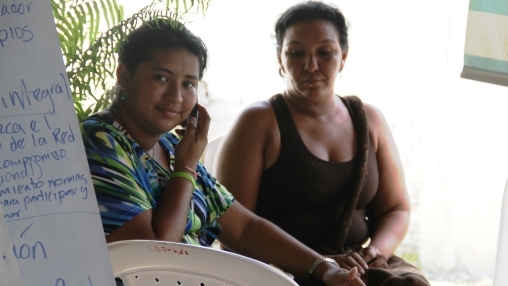Wearing a bright green and blue shirt, Aura Camargo Mercado, of the region of the Montes de Maria, in the north of Colombia, chats and laughs with her friends during lunch.
But the 23-year-old young woman is serious when she talks about her story: when she was small, she had to flee from home with her mother to save her life. Moreover, she lost her uncle and two cousins because of the violence generated by the armed conflict that has affected Colombia for more than 50 years.
However, despite of everything, Aura dreams of peace. “We started to have our dream, our hopes, in the middle of the conflict. We were dreaming of a region in peace, where we could live peacefully.”
A dream that started in 2004 with “Paz y Desarrollo” (Peace and Development), a program of the Colombian government co-financed by the World Bank, that supported local development, together with civil society organizations that were seeking to build peace starting from the communities.
Aura, for example, is part of Narrar para Vivir (Tell to Live), a group of 840 women, victims of the armed conflict that help other victims. She explains that telling her stories and listening to others, helped her a lot. “Just that they listen to us is fundamental for us,” she says.
Narrar para Vivir is one of the groups that are part of the “Red Montemariana” (The Montes de Maria Network), a meeting space for civil society organizations from the region of the Montes de Maria, that –with 9,000 members – seeks to break the circle of violence by working in networks.
“Armored” leaders
The “Red Montemariana” seeks to strengthen the organizations that work directly in the communities and their leaders, so that they are protagonists of their own development, less vulnerable to violence and so that they can overcome poverty.
At the beginning of the Peace and Development project, many of the community leaders were forced to be silent or hidden because of the armed conflict. Because of that, the Development and Peace of the Montes de Maria Network Foundation (Fundación Red Desarrollo y Paz de los Montes de María) started to promote peaceful coexistence between them.

